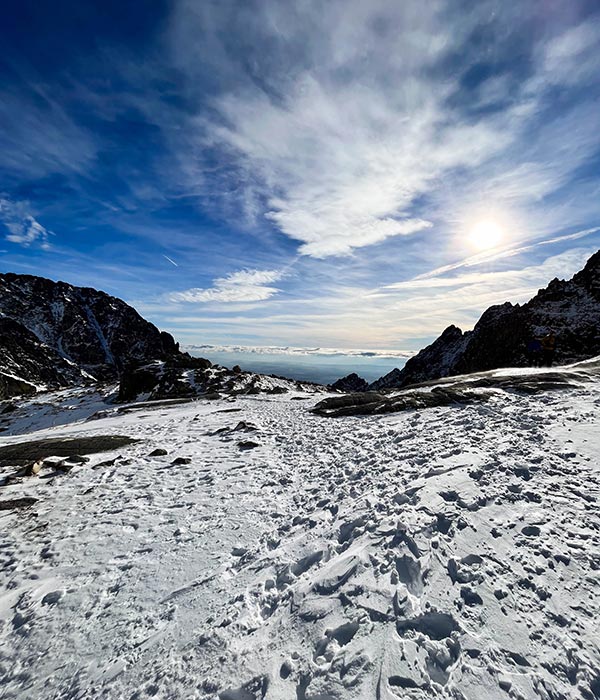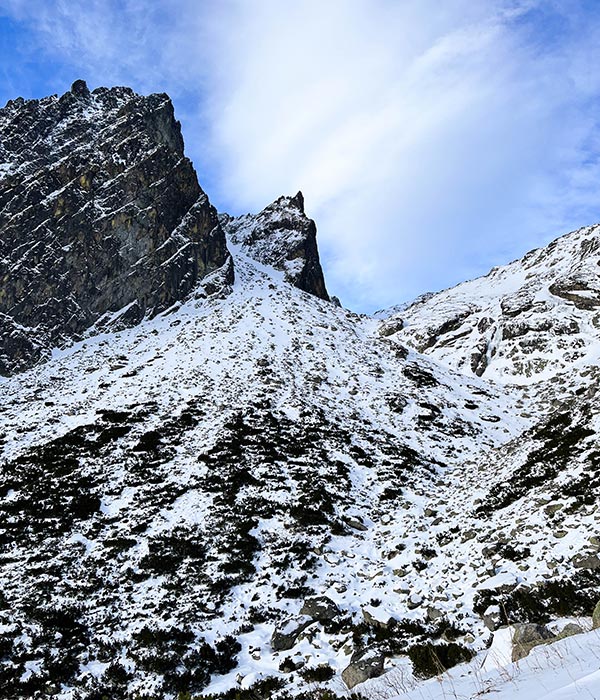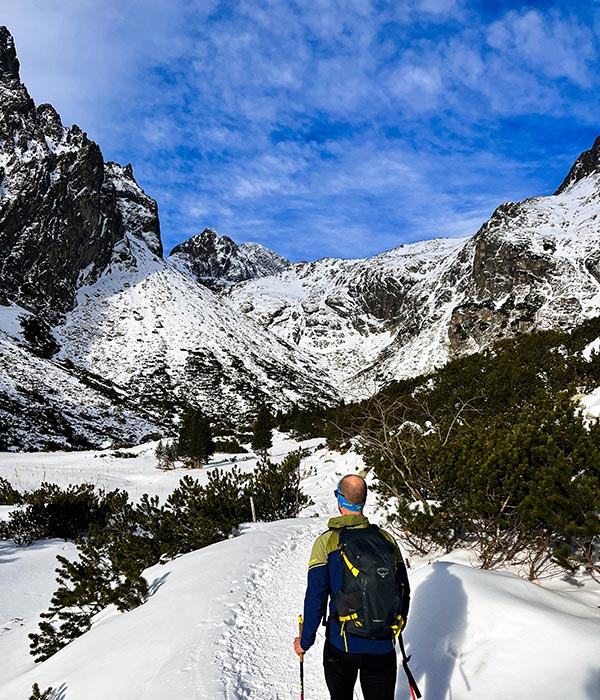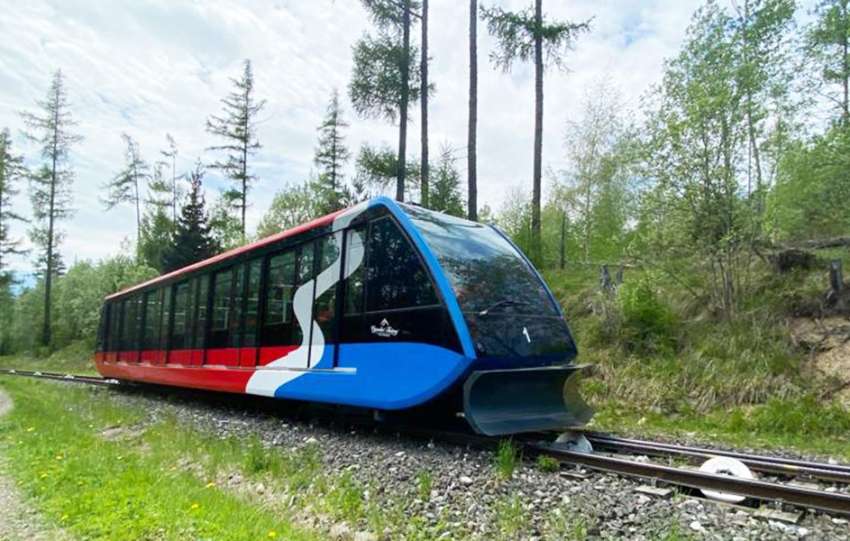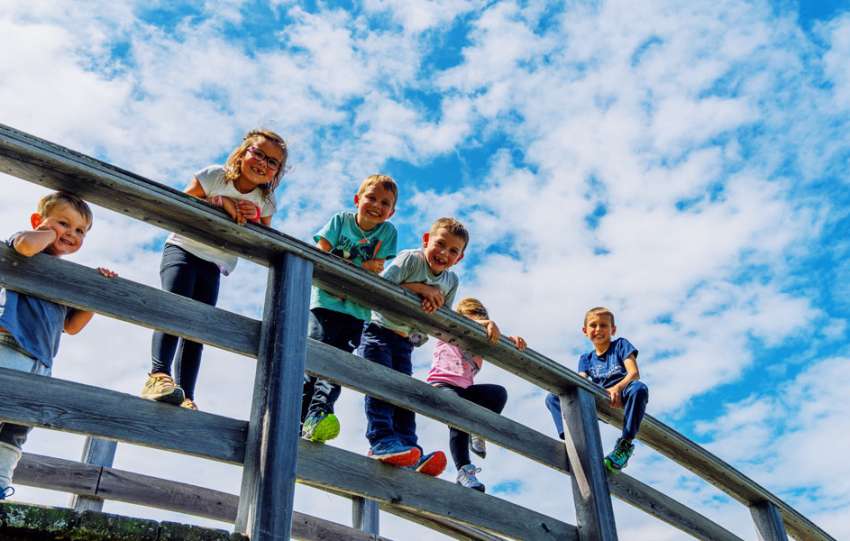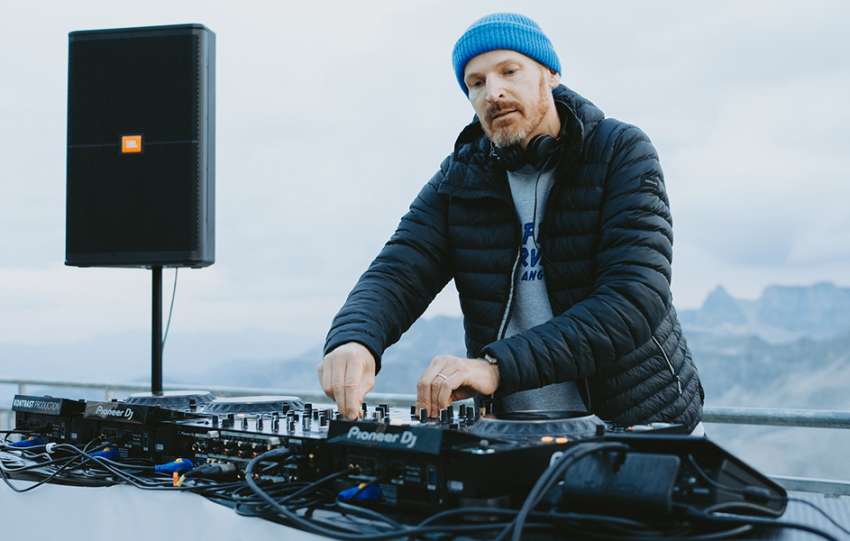Share This Article
Is it possible to visit 5 chalets in the Tatras in winter within one day? With the help of a funicular, it’s not that difficult at all.
The High Tatras offer lots of beauties on a small area, including charming mountain chalets that were built in the Tatras step by step to serve tourists. We will take a look at 5 of them today and discuss their history a bit.
Let’s begin in the oldest village in the High Tatras – Starý Smokovec, which is the ideal location to set out for adventures. One can get from there to Malá Studená dolina (valley), Veľká Studená dolina (valley), Mt Slavkovský štít or Skalnaté pleso (tarn). We have chosen a sunny day to visit the chalets and it was exceptionally warm outside considering the season of the year.
What’s better? A train, a rack railway or a funicular?
The beginning of our journey can be shortened with help of a rack railway operating to Hrebienok. But wait! Is it really a rack railway? Many people think so, but it is a funicular in fact. Although it runs on rails, there is a rope in the middle and it is pulled by an engine in the upper station. So no rack railway but a funicular. 🙂 A real rack railway operates to Štrbské Pleso. We hit the road early in the morning, though, and the funicular is closed so we have to walk up along the green-marked trail to Hrebienok. The terrain is surprisingly icy so we rather put our shoe cleats on already at the beginning.
Hrebienok is a centre with high tourist traffic. Veľká Studená dolina and Malá Studená dolina (valleys) can be seen very well from there. Plus there is the famous Tatra Temple of Ice in winter and one can sledge down from there. In summer, the road running back down to Starý Smokovec is ideal for using an off-road scooter, which feels great especially after a long hiking trip.
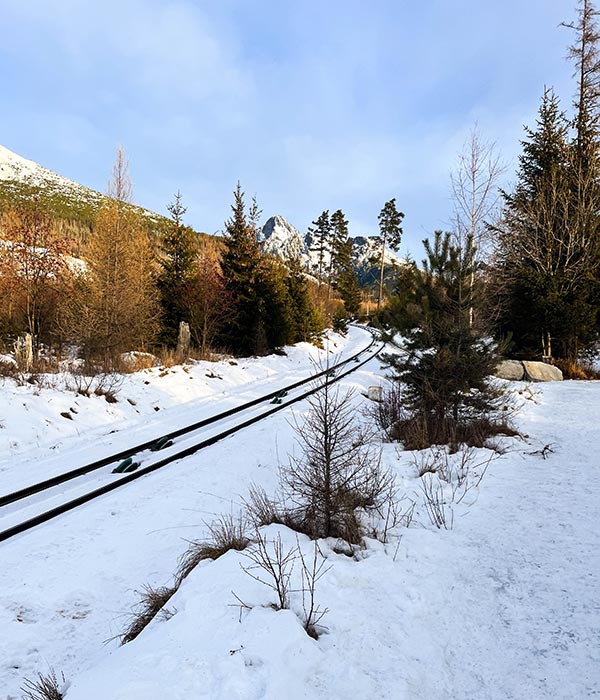
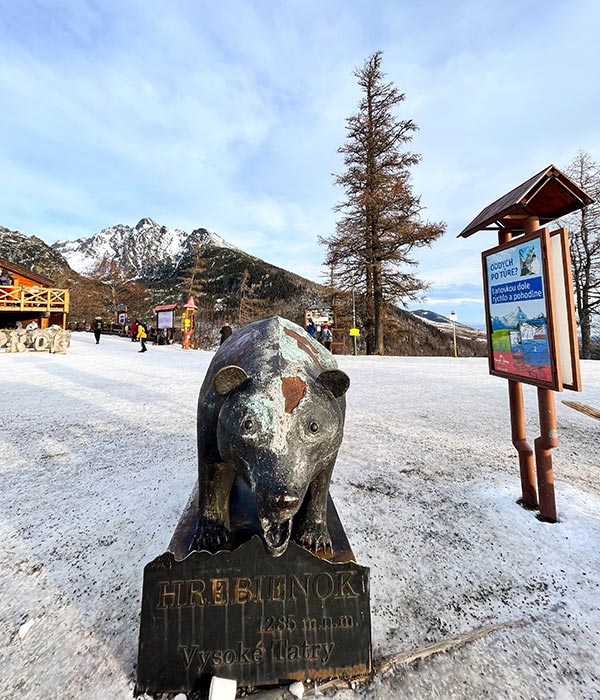
Bilík’s chalet
After a short walk from Hrebienok, we get to the first chalet, which is called Bilík’s. It was unlucky to have experienced several fires and that’s why its design changed in the course of the years. The present-day name is quite new because the so-called Ružena’s chalet used to stand there before and a hotel was added to it. But it burnt down and so did the chalet.
Two hotels were built there instead after the fire and they were called Studenopotocké kúpele (Spa of Studený potok). However, they were destroyed by fire too. It took some time until the chalet looked like it does today and was known as Guhr’s chalet then. After WWII, it was renamed to Bilík’s chalet in honour of Pavol Bilík, who was captured by the Germans in this area during the Slovak National Uprising and executed. Bilík’s chalet offers a beautiful view of Malá Studená dolina and Veľká Studená dolina.
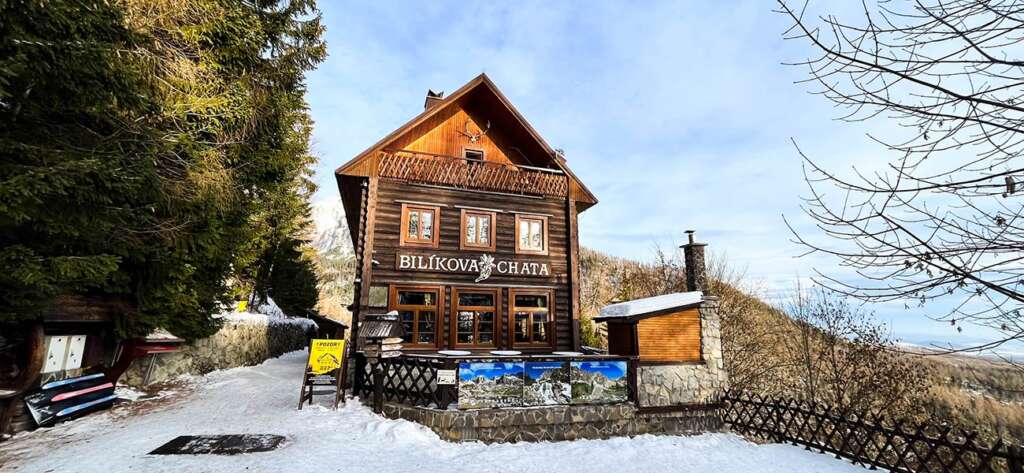
Rainer’s hut
We walk down from Bilík’s chalet to the Waterfalls of Studený potok (brook) and get to Rainer’s chalet. Or is it a hut? It was never supposed to be a chalet but rather a hut or a shelter which came into existence thanks to Ján Juraj Rainer. He built it as a tourist shelter, but it didn’t last long. And it started to fall into disrepair after Ján Juraj Rainer died. There were some attempts to repair it, but the building served only for mountain load bearers and guides to spend the night. The Kamzík chalet was built right next to it, which is very interesting. It was very popular, but was closed after its success faded away.
The interest in the hut started to increase afterwards and it was rented by Peter Petras, a secondary school teacher. He has taken care of the hut until today and is known as the symbol of the oldest hut in the Tatras, where one can have some refreshment in his company.
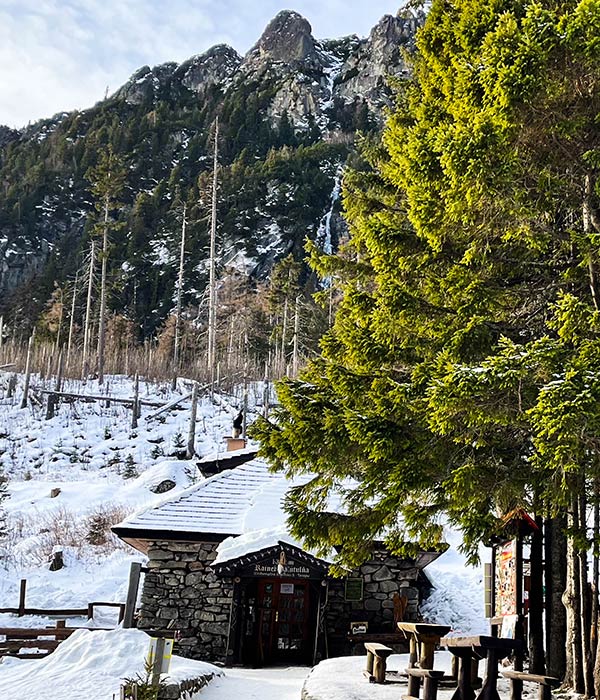
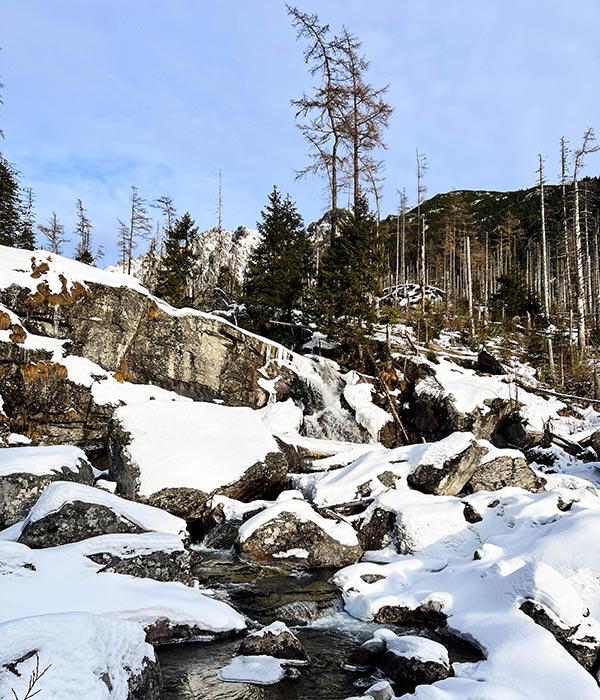
Zamkovský’s chalet
The trail starts to go up and we find ourselves in Malá Studená dolina (valley). We pass Obrovský vodopád (Giant waterfall), where almost every tourist stops. It doesn’t take long and we arrive at Zamkovský’s chalet, which is still named after Štefan Zamkovský, an excellent climber, mountain guide and cottage-keeper. It’s rather interesting that the chalet didn’t have a name after it was built, but everyone would call it “Zamka”. Unfortunately, this chalet didn’t keep the original name either. It was nationalised after WWII and the Zamkovskí family had to leave it. The chalet was renamed Chalet of Capt. Nálepka and got its original name back only in 1991.
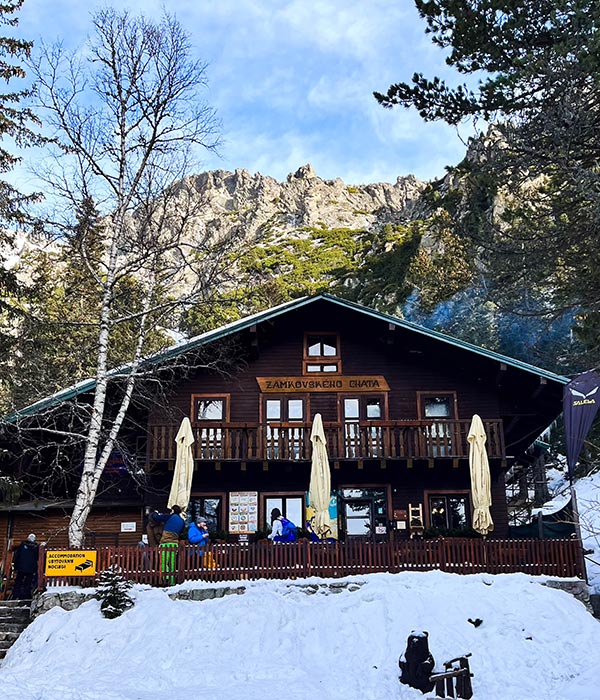
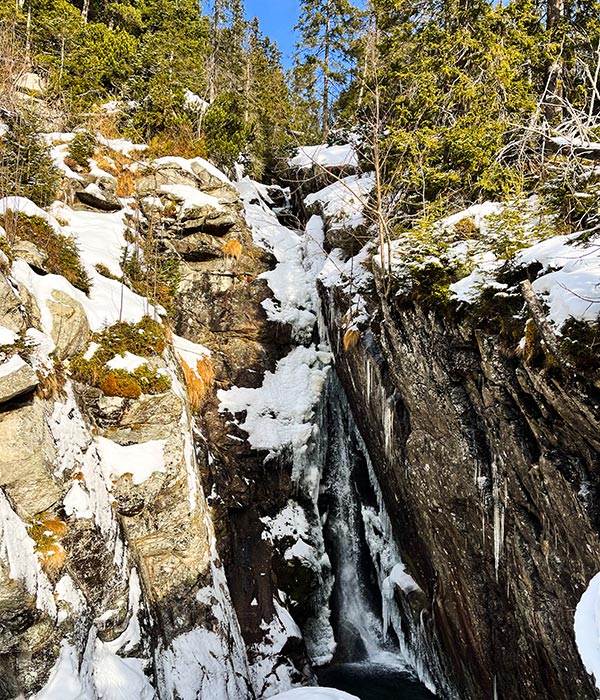
Téry’s chalet
We don’t stay in Zamkovský’s chalet too long and continue to hike to the highest located chalet in the Tatras, which is open all year round. Téry’s chalet kept its first rank until the Chalet below Mt Rysy was built. If we “played with words”, the Chalet below Mt Rysy is the highest-located chalet in the Tatras and Téry’s chalet is the highest-located chalet in the Tatras open all year round.
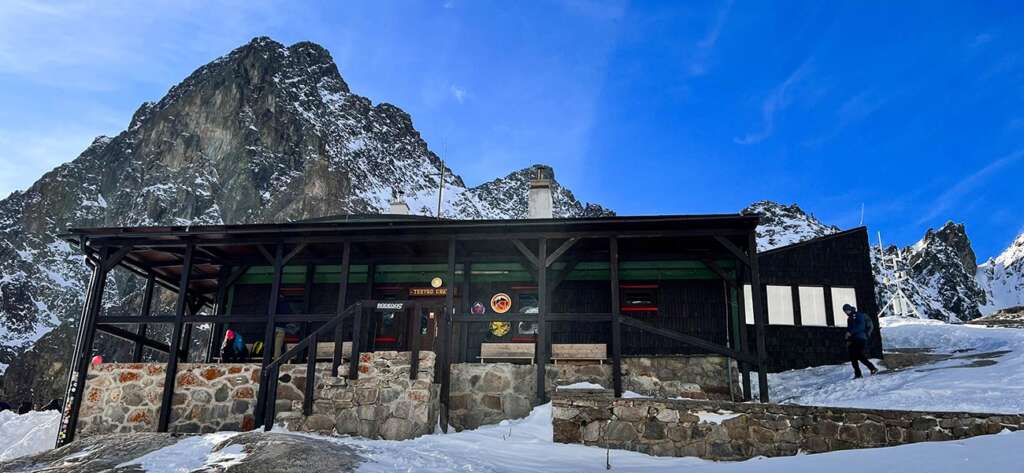
The ascent to the chalet is nice in every season of the year but has a special magic in winter because the mountain summits around are covered with snow and look like sprinkled with sugar. The trail is well-trodden and gets steeper only before the slope known as Veľký hang but it is important to watch out also for avalanches in winter because they might fall from there.
After a short but intensive ascent, we climb the slope of Malý hang and find ourselves in the chalet named after doctor and climber Edmund Téry. It is the ideal starting point to climb saddles, peaks and valleys around and hike over Priečne sedlo (saddle) to Veľká Studená dolina (valley) and Zbojnícka chalet and across the Crossroads below Sedielko (saddle) and through Javorová dolina (valley) to Tatranská Javorina. But don’t forget to respect the seasonal trail closure between 1.11. and 15.6.
Skalnatá chalet
After enjoying stunning views and recharging our batteries, we go back down. As it’s already quite late, there are lots of people at Zamkovský’s chalet. At the crossroads, we turn to Tatranská magistrála (Tatra arterial road), which is less busy, and get to a chalet below a huge boulder called Rocky fire ring, which the chalet was named after (Skalnatá = Rocky). It’s the youngest chalet of all.
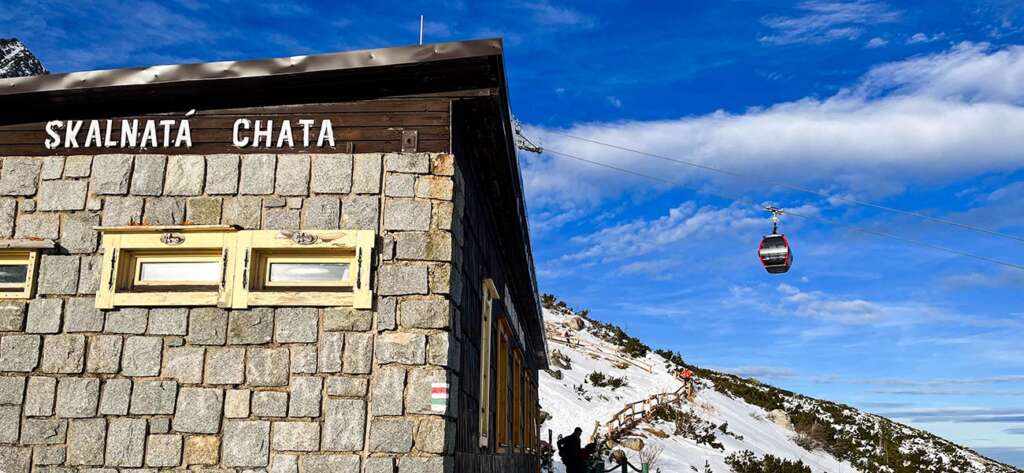
It is interesting that it wasn’t a chalet from the beginning either. We could call it a hut or a shelter that served for tourists heading for Mt Lomnický štít to stay overnight. It started to look like today and became sought after only after the cable car running from Tatranská Lomnica was built in 1937. Thanks to the cable car, the chalet was visited by lots of tourists and became one of the most popular ones in the Tatras soon. Unfortunately, it couldn’t avoid problems either and had to be closed due to hygiene reasons from 1972 to 1984 and served as a depot only. The situation changed when it started to be managed by the Tatra National Park and rented by the park to Laco Kulanga later. Laco gave it the original mission back. Today, it is managed by his son Paľo Kulanga.
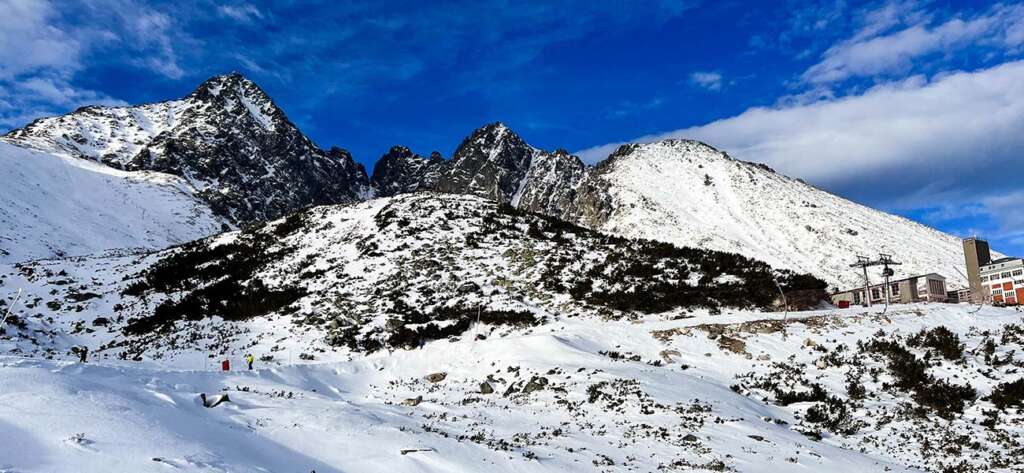
Cable car trip
After a short break in Skalnatá chalet, we arrive at the upper cable car station in Skalnaté pleso and feast our eyes on Mt Lomnický štít. As we have Gopass cards, we decide to use them and take the cable car to make our journey along the longest Slovak piste down to Tatranská Lomnica shorter.
A railway which links Tatranská Lomnica with Studený Potok, Starý Smokovec and also Štrbské Pleso made the village much more attractive. The first train started to operate there already in 1895. This is the train we wait for to travel back to Starý Smokovec, where our car is parked.
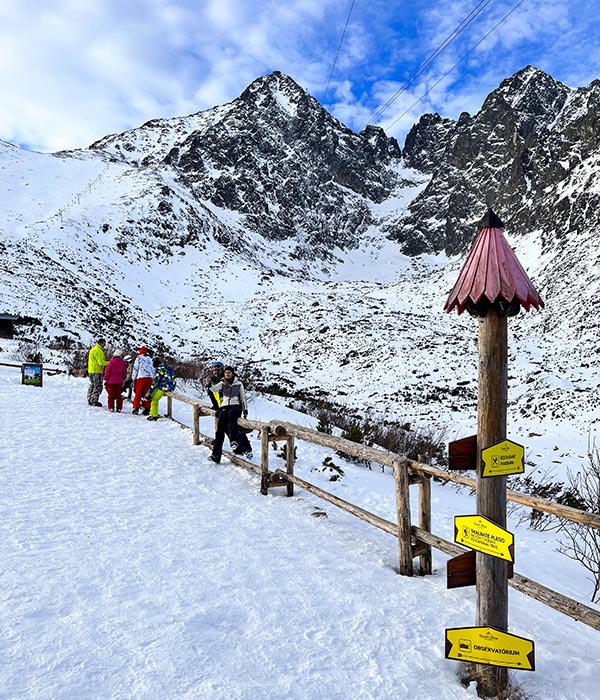

How did the whole hiking trip look like?
The trip took about 6 hours. We completed 17 kilometres and surmounted 1,400 altitude metres. We appreciated the support chains attached to the rocks in some sections, which helped us feel safer especially when going down. Hiking poles are very useful as well. We could say that if a trail in the Tatras is well trodden, it takes less time and also less energy to pass it than in summer when one has to watch out for various stones and roots. The cable car on the way down from Skalnaté pleso was a big help too. If you want to make your trip shorter, you can use the already mentioned funicular to get to Hrebienok.
This article has been created in cooperation with MTHIKER.sk, where the whole trip is documented in details in an article and a video.


